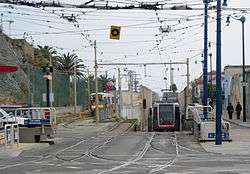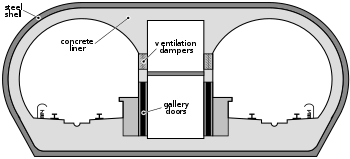Market Street Subway
| Market Street Subway | |||||||||||||||||||||||||||||||||||||||||||||||||||||||||||||||||||||||||||||||||||||||||||||||||||||||||||||||||||||||||||||||||||||||||||||||||||||||||||||||||||||||||||||||||||||||||||||||||||||||||||||||||||||||||||||||||||||||||
|---|---|---|---|---|---|---|---|---|---|---|---|---|---|---|---|---|---|---|---|---|---|---|---|---|---|---|---|---|---|---|---|---|---|---|---|---|---|---|---|---|---|---|---|---|---|---|---|---|---|---|---|---|---|---|---|---|---|---|---|---|---|---|---|---|---|---|---|---|---|---|---|---|---|---|---|---|---|---|---|---|---|---|---|---|---|---|---|---|---|---|---|---|---|---|---|---|---|---|---|---|---|---|---|---|---|---|---|---|---|---|---|---|---|---|---|---|---|---|---|---|---|---|---|---|---|---|---|---|---|---|---|---|---|---|---|---|---|---|---|---|---|---|---|---|---|---|---|---|---|---|---|---|---|---|---|---|---|---|---|---|---|---|---|---|---|---|---|---|---|---|---|---|---|---|---|---|---|---|---|---|---|---|---|---|---|---|---|---|---|---|---|---|---|---|---|---|---|---|---|---|---|---|---|---|---|---|---|---|---|---|---|---|---|---|---|---|---|---|---|---|---|---|---|---|---|---|---|---|---|---|---|---|---|
 Muni's Duboce Portal at Duboce Avenue and Church Street | |||||||||||||||||||||||||||||||||||||||||||||||||||||||||||||||||||||||||||||||||||||||||||||||||||||||||||||||||||||||||||||||||||||||||||||||||||||||||||||||||||||||||||||||||||||||||||||||||||||||||||||||||||||||||||||||||||||||||
| Overview | |||||||||||||||||||||||||||||||||||||||||||||||||||||||||||||||||||||||||||||||||||||||||||||||||||||||||||||||||||||||||||||||||||||||||||||||||||||||||||||||||||||||||||||||||||||||||||||||||||||||||||||||||||||||||||||||||||||||||
| Type |
Rapid transit and Light rail/Streetcar | ||||||||||||||||||||||||||||||||||||||||||||||||||||||||||||||||||||||||||||||||||||||||||||||||||||||||||||||||||||||||||||||||||||||||||||||||||||||||||||||||||||||||||||||||||||||||||||||||||||||||||||||||||||||||||||||||||||||||
| System | |||||||||||||||||||||||||||||||||||||||||||||||||||||||||||||||||||||||||||||||||||||||||||||||||||||||||||||||||||||||||||||||||||||||||||||||||||||||||||||||||||||||||||||||||||||||||||||||||||||||||||||||||||||||||||||||||||||||||
| Locale | San Francisco, California | ||||||||||||||||||||||||||||||||||||||||||||||||||||||||||||||||||||||||||||||||||||||||||||||||||||||||||||||||||||||||||||||||||||||||||||||||||||||||||||||||||||||||||||||||||||||||||||||||||||||||||||||||||||||||||||||||||||||||
| Termini |
Embarcadero Station Castro Station | ||||||||||||||||||||||||||||||||||||||||||||||||||||||||||||||||||||||||||||||||||||||||||||||||||||||||||||||||||||||||||||||||||||||||||||||||||||||||||||||||||||||||||||||||||||||||||||||||||||||||||||||||||||||||||||||||||||||||
| Stations | 7 | ||||||||||||||||||||||||||||||||||||||||||||||||||||||||||||||||||||||||||||||||||||||||||||||||||||||||||||||||||||||||||||||||||||||||||||||||||||||||||||||||||||||||||||||||||||||||||||||||||||||||||||||||||||||||||||||||||||||||
| Operation | |||||||||||||||||||||||||||||||||||||||||||||||||||||||||||||||||||||||||||||||||||||||||||||||||||||||||||||||||||||||||||||||||||||||||||||||||||||||||||||||||||||||||||||||||||||||||||||||||||||||||||||||||||||||||||||||||||||||||
| Opened |
BART: November 5, 1973 Muni Metro: February 18, 1980 | ||||||||||||||||||||||||||||||||||||||||||||||||||||||||||||||||||||||||||||||||||||||||||||||||||||||||||||||||||||||||||||||||||||||||||||||||||||||||||||||||||||||||||||||||||||||||||||||||||||||||||||||||||||||||||||||||||||||||
| Owner |
San Francisco Bay Area Rapid Transit District San Francisco Municipal Transportation Agency | ||||||||||||||||||||||||||||||||||||||||||||||||||||||||||||||||||||||||||||||||||||||||||||||||||||||||||||||||||||||||||||||||||||||||||||||||||||||||||||||||||||||||||||||||||||||||||||||||||||||||||||||||||||||||||||||||||||||||
| Operator(s) |
San Francisco Bay Area Rapid Transit District San Francisco Municipal Railway | ||||||||||||||||||||||||||||||||||||||||||||||||||||||||||||||||||||||||||||||||||||||||||||||||||||||||||||||||||||||||||||||||||||||||||||||||||||||||||||||||||||||||||||||||||||||||||||||||||||||||||||||||||||||||||||||||||||||||
| Character | two level cut-and-cover rapid transit and light rail tunnel | ||||||||||||||||||||||||||||||||||||||||||||||||||||||||||||||||||||||||||||||||||||||||||||||||||||||||||||||||||||||||||||||||||||||||||||||||||||||||||||||||||||||||||||||||||||||||||||||||||||||||||||||||||||||||||||||||||||||||
| Technical | |||||||||||||||||||||||||||||||||||||||||||||||||||||||||||||||||||||||||||||||||||||||||||||||||||||||||||||||||||||||||||||||||||||||||||||||||||||||||||||||||||||||||||||||||||||||||||||||||||||||||||||||||||||||||||||||||||||||||
| Track gauge |
BART: 5 ft 6 in (1,676 mm) (Indian gauge) Muni Metro: 4 ft 8 1⁄2 in (1,435 mm) (standard gauge) | ||||||||||||||||||||||||||||||||||||||||||||||||||||||||||||||||||||||||||||||||||||||||||||||||||||||||||||||||||||||||||||||||||||||||||||||||||||||||||||||||||||||||||||||||||||||||||||||||||||||||||||||||||||||||||||||||||||||||
| Electrification |
BART: Third rail, 1000 V DC Muni Metro: Overhead lines, 600 V DC | ||||||||||||||||||||||||||||||||||||||||||||||||||||||||||||||||||||||||||||||||||||||||||||||||||||||||||||||||||||||||||||||||||||||||||||||||||||||||||||||||||||||||||||||||||||||||||||||||||||||||||||||||||||||||||||||||||||||||
| Highest elevation | underground | ||||||||||||||||||||||||||||||||||||||||||||||||||||||||||||||||||||||||||||||||||||||||||||||||||||||||||||||||||||||||||||||||||||||||||||||||||||||||||||||||||||||||||||||||||||||||||||||||||||||||||||||||||||||||||||||||||||||||
| |||||||||||||||||||||||||||||||||||||||||||||||||||||||||||||||||||||||||||||||||||||||||||||||||||||||||||||||||||||||||||||||||||||||||||||||||||||||||||||||||||||||||||||||||||||||||||||||||||||||||||||||||||||||||||||||||||||||||
The Market Street Subway is a double-decker subway tunnel that carries Muni Metro and BART train traffic in San Francisco, California.[1][2] It runs under the length of Market Street between Embarcadero Station and Castro Street Station. The upper level is used by Muni Metro lines and the lower level is used by BART lines. BART does not run through the whole subway; it turns south and runs under Mission Street southwest of Civic Center Station. The northeastern end of the BART level is connected to the Transbay Tube. On the Muni Metro level, the southwestern end of the Market Street Subway connects to the much-older Twin Peaks Tunnel, and the northeastern end connects to surface tracks along the Embarcadero.
History
The Market Street Railway had existed on the surface parallel to the subway's alignment in some form since 1860 with services terminating at the Ferry Building.[3] To alleviate traffic, plans for a tunnel under Market Street can be dated to at least 1912.[4] By 1918, there were four tracks running down the thoroughfare - two per direction.[3] That plan is nearly identical to the design built 60 years later, including two levels of train traffic and provisions for both overhead and third-rail power delivery, but not accounting for a Transbay Tunnel.
The Twin Peaks Tunnel was built with the east end sloping downward, foreseeing future connection to a tunnel under Market Street.[5]
Serious consideration for construction was finally given while designing the initial BART system. Original plans variously called for the current stations, less Embarcadero, with a connection to a (now unbuilt) subway under Geary Street or the existing Twin Peaks Tunnel. The 1961 BART plan called for Muni operations in the subway only between Sansome and Gough Streets and did not have any provisions for the Embarcadero station.[6]
Construction, commencing in July 1967, was carried out via the cut-and-cover method. By this time, Embarcadero station was planned and a station box was constructed with the tunnel, but was not slated to be complete with the initial opening of the subway.
BART trains first ran through the Subway with service as far as Daly City on November 5, 1973. Connections through the Transbay Tube were opened for revenue service on September 16, 1974. Embarcadero station was opened shortly after on May 27, 1976; its design is unique among Market Street BART stations.
Starting on February 18, 1980 and continuing for over a year afterward, Muni replaced surface operations with subway service at all stations in the tunnel. At that point, there were no plans to maintain the street-running tracks on Market Street, but that changed in the late 1980s after the success of several historic trolley festivals. Muni's Embarcadero portal opened in 1998, and was not an original part of the subway's plan; this allowed connections to Caltrain's 4th and King Station. T Third trains began running in the subway with the line's inauguration on April 7, 2007. That line will be rerouted through Central Subway, which is a later-constructed tunnel running underneath the Market Street Subway east of Powell Street Station, when completed.
Services
The K Ingleside, L Taraval, M Ocean View, and T Third Street Muni Metro lines run through the entire length of the subway to its direct connection with the Twin Peaks Tunnel. The J Church and N Judah lines leave the subway via the Duboce portal at Church and Duboce streets. The Embarcadero Portal is currently used by just the N Judah and the T Third Street lines. Since the Muni Metro platforms at Montgomery Street, Powell Street, and Civic Center are long enough to hold two 75-foot (23 m) two-car trains simultaneously, the San Francisco Municipal Transportation Agency began double-berthing in April 2015.[7] Under this process, two trains are in the station at once: the rear train discharges passengers while the front train boards passengers. The new practice was aimed at reducing passenger frustration, though it would not reduce travel times. In 1997 work began to install the SelTrac CBTC-based signalling system in the subway. The work was completed in 2001 and station-to-station operation is now completely automated under normal operation.[8]
BART headways are low through this segment, as the right of way carries four of the system's five rapid transit lines on just two tracks.
The F Market & Wharves heritage streetcar line, while not a Muni Metro service, runs on the surface for the entire length of the subway with connections at all stations.
Upon completion, the Central Subway will be connected to the Market Street Subway via a pedestrian underpass within the Muni fare area.
Stations in the Market Street Subway
There are a total of seven stations in the tunnel. Four are used by BART; all seven are utilized by the Muni Metro lines that had previously run on the surface of Market Street, as well as the T Third Street line until the completion of the Central Subway. Two Muni lines exit the tunnel at the Duboce portal, and thus do not serve two stations (although the J Church connects to Church Street at a surface stop).
Stations are listed from the northeast to the southwest.
| Station | Platform Layout | Muni Metro | BART |
|---|---|---|---|
| Embarcadero Station | island | ||
| Montgomery Street Station | island | ||
| Powell Street Station | island | ||
| Civic Center / UN Plaza Station | island | ||
| Van Ness Station | island | ||
| Church Street Station | side | ||
| Castro Street Station | side |
References
- ↑ Transit Rider Bay Area, California Muni
- ↑ San Francisco Muni Metro Archived 2007-12-19 at the Wayback Machine.
- 1 2 Market Street Railway (2004). A Brief History of Market St. Railway. Retrieved September 23, 2005. Section The Market Street Railroad Company, 1860-1882 Archived September 21, 2005, at the Wayback Machine.
- ↑ "REPORT ON MARKET STREET RAPID TRANSIT TUNNEL". Electric Railway Journal. XL: 883. 19 October 1912. Retrieved 23 July 2018.
- ↑ Callwell, Robert. "Transit in San Francisco A Selected Chronology, 1850 - 1995" (PDF). SFMTA.com. San Francisco Municipal Railway. Retrieved 24 July 2018.
- ↑ "Rapid Transit for the San Francisco Bay Area" (PDF). LA Metro Library. Parsons Brinkerhoff / Tudor / Bechtel. Retrieved 21 July 2018.
- ↑ Rodriguez, Joe Fitzgerald (April 9, 2015). "Muni given go-ahead for double berthing at downtown stations". San Francisco Examiner. Retrieved 26 May 2015.
- ↑ http://www.tsd.org/SFMuni48TPH.doc
